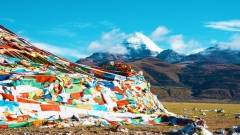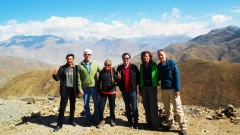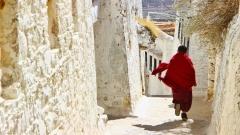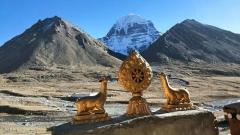Nestled in the fertile basin of southern Tibet, the Yarlung Valley is often called the “cradle of Tibetan civilization.” Here, history, myth, and spirituality converge. From legendary kings to ancient fortresses, the valley tells the story of how Tibet evolved from scattered tribes into a unified kingdom. Exploring Yarlung offers a rare glimpse into Tibet’s earliest roots.
The Geography of Yarlung Valley
The Yarlung Valley lies southeast of Lhasa, near Tsetang in present-day Shannan Prefecture. Fed by tributaries of the Yarlung Tsangpo River, the valley is unusually fertile compared with Tibet’s high-altitude grasslands.
This natural abundance made it an ideal place for early human settlement. Mild climate, arable soil, and strategic location allowed agriculture, animal husbandry, and trade to flourish. As such, Yarlung became the birthplace of Tibet’s first dynasties.
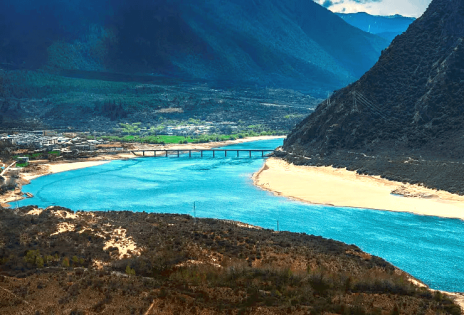
Yarlung Zangbo Grand Canyon
Myth and Legend of Early Tibetan Kings
According to Tibetan tradition, the Yarlung Valley was where the first kings descended from heaven. The myth of Nyatri Tsenpo, Tibet’s first king, tells of a divine ruler who came down from the sky via a celestial ladder around the 2nd century BCE.
Unlike later monarchs, these early kings were believed to return to heaven upon death. Over time, this myth was replaced with more tangible evidence of human burials, marking the transition from divine to earthly leadership.
The Rise of the Yarlung Dynasty
The Yarlung Valley gave rise to the Yarlung Dynasty, which laid the foundation of a unified Tibetan state. By the 7th century, Songtsen Gampo, one of the most powerful Yarlung kings, consolidated scattered tribes and founded the Tibetan Empire.
Key achievements of the Yarlung kings include:
-
Establishing centralized political power.
-
Building Yumbu Lakhang, Tibet’s earliest fortress-palace.
-
Introducing Buddhism through Songtsen Gampo’s marriage alliances with Nepal and Tang China.
The dynasty’s legacy extended far beyond the valley, shaping Tibetan governance, culture, and spirituality for centuries.
Yumbu Lakhang: Tibet’s First Palace
Standing proudly on a hill overlooking the Yarlung Valley, Yumbu Lakhang is considered Tibet’s oldest palace. Originally built during the reign of Nyatri Tsenpo, it served as a royal residence and later as a monastery.
Visitors today can still climb to Yumbu Lakhang and marvel at:
-
Its strategic location as a watchtower.
-
Frescoes depicting early Tibetan kings.
-
Panoramic views of fertile fields that sustained early Tibetan civilization.
Buddhism’s Arrival and Transformation of Yarlung
The Yarlung Valley was pivotal in Tibet’s adoption of Buddhism. Songtsen Gampo promoted the faith, but it was later rulers like Trisong Detsen who firmly established Buddhism as the state religion.
The valley’s monasteries, such as Tradruk Monastery, became centers of learning and cultural fusion. Here, Indian and Chinese influences mingled with indigenous Bön practices, creating a uniquely Tibetan form of Buddhism that still thrives today.
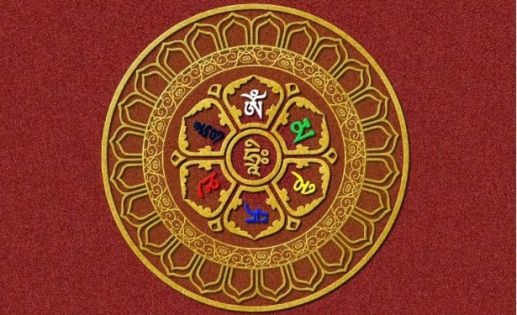
Archaeological Evidence and Burial Mounds
Archaeologists have uncovered royal tombs in the Yarlung Valley, most notably at Chongye Valley, south of Tsetang. These burial mounds are believed to contain remains of early Yarlung kings.
Excavations reveal:
-
Tomb chambers built with stone and wood.
-
Artifacts such as pottery, weapons, and jewelry.
-
Evidence of ritual sacrifices, reflecting early Tibetan religious practices.
These finds provide tangible proof of Tibet’s transition from myth to history.
Cultural and Historical Significance
Yarlung Valley’s legacy is profound:
-
Political: It marks the rise of Tibet as a centralized empire.
-
Cultural: Early Tibetan script and administrative systems emerged here.
-
Religious: It became the birthplace of Tibetan Buddhism’s synthesis with indigenous beliefs.
Even today, Tibetan people regard Yarlung as a sacred ancestral homeland. Festivals and pilgrimages honor its deep spiritual resonance.
The Yarlung Valley Today: A Living Museum
For modern travelers, the Yarlung Valley is more than an archaeological site—it’s a living museum.
Highlights for visitors include:
-
Tsetang Town: The cultural hub of Shannan, with easy access to historic sites.
-
Tradruk Monastery: Said to house a thangka embroidered by Princess Wencheng.
-
Samye Monastery: Tibet’s first Buddhist monastery, a short journey from the valley.
-
Scenic Fields and Villages: Traditional Tibetan farming communities still thrive here.
Tourists can experience both the grandeur of ancient palaces and the simplicity of rural Tibetan life in a single trip.
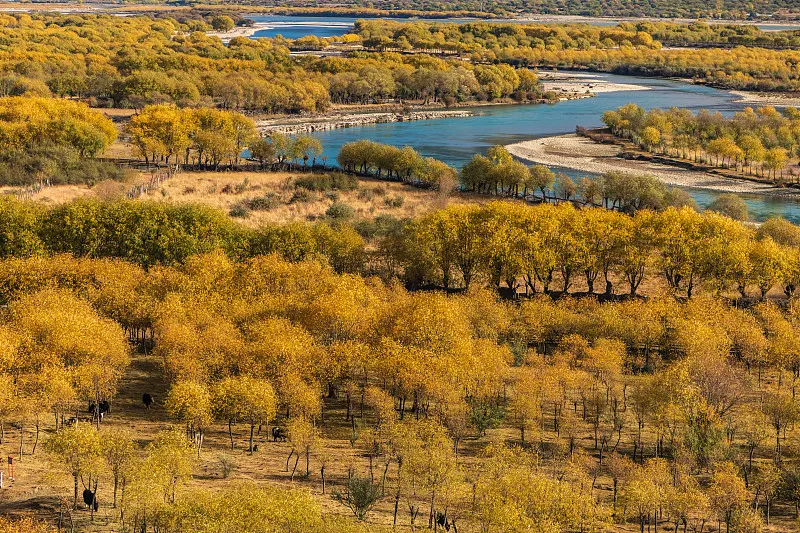
Autumn scenery of the Yarlung Zangbo River
Travel Tips for Visitors
-
Best Time to Visit: April to October, when weather is mild.
-
Altitude: Around 3,500 meters—manageable for most travelers with acclimatization.
-
Transportation: Accessible from Lhasa by car or bus, around 2–3 hours.
-
Cultural Etiquette: Respect local religious customs, especially when visiting monasteries and burial mounds.
Visiting Yarlung allows travelers to connect deeply with Tibetan identity while enjoying breathtaking landscapes.
Conclusion
The Yarlung Valley is the heart of Tibetan history and spirituality. From the myths of heaven-descended kings to the founding of the Tibetan Empire, this fertile valley has nurtured culture, religion, and governance for centuries. Today, it continues to inspire pilgrims, historians, and travelers alike.
To understand Tibet, one must begin at Yarlung—the cradle of its civilization.



